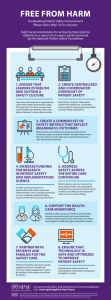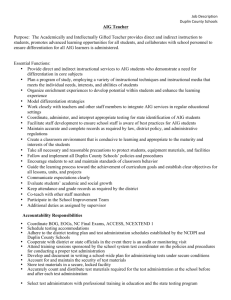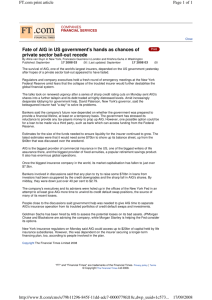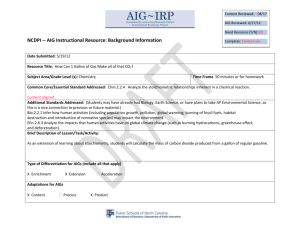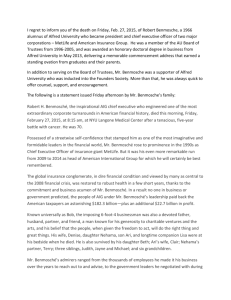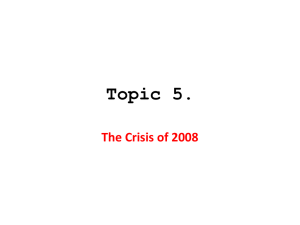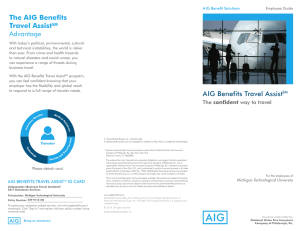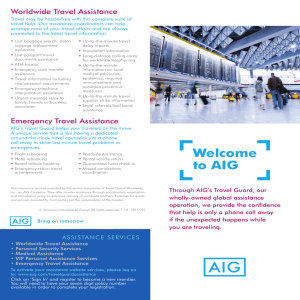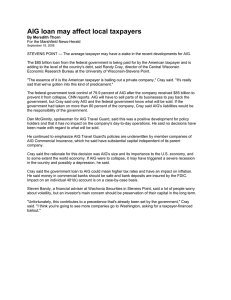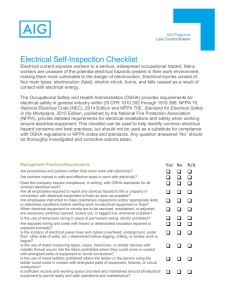AIG Financial Crisis Analysis: Risk Management Failures
advertisement
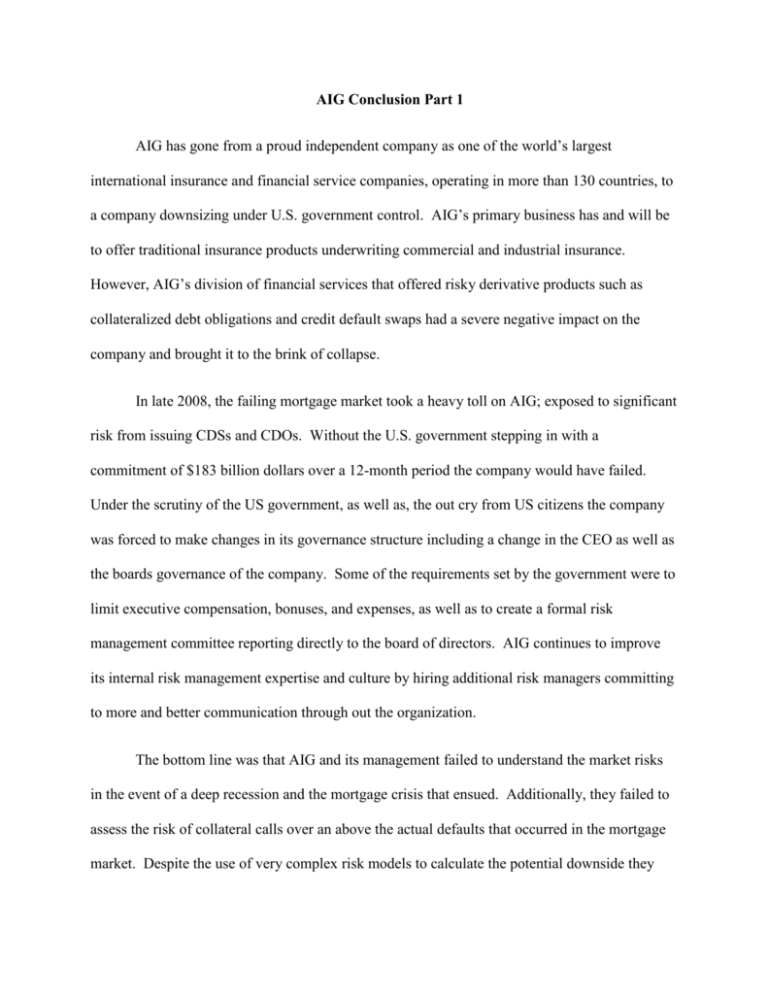
AIG Conclusion Part 1 AIG has gone from a proud independent company as one of the world’s largest international insurance and financial service companies, operating in more than 130 countries, to a company downsizing under U.S. government control. AIG’s primary business has and will be to offer traditional insurance products underwriting commercial and industrial insurance. However, AIG’s division of financial services that offered risky derivative products such as collateralized debt obligations and credit default swaps had a severe negative impact on the company and brought it to the brink of collapse. In late 2008, the failing mortgage market took a heavy toll on AIG; exposed to significant risk from issuing CDSs and CDOs. Without the U.S. government stepping in with a commitment of $183 billion dollars over a 12-month period the company would have failed. Under the scrutiny of the US government, as well as, the out cry from US citizens the company was forced to make changes in its governance structure including a change in the CEO as well as the boards governance of the company. Some of the requirements set by the government were to limit executive compensation, bonuses, and expenses, as well as to create a formal risk management committee reporting directly to the board of directors. AIG continues to improve its internal risk management expertise and culture by hiring additional risk managers committing to more and better communication through out the organization. The bottom line was that AIG and its management failed to understand the market risks in the event of a deep recession and the mortgage crisis that ensued. Additionally, they failed to assess the risk of collateral calls over an above the actual defaults that occurred in the mortgage market. Despite the use of very complex risk models to calculate the potential downside they underestimated the risk related to CDOs and CDSs. The data they used was historical data over a long period of time that did not include a scenario of a deep recession and the mortgage market failure. Risk management is not just about calculating the risks that are obvious and setting proper reserves and controls to mitigate such risks, but to assess the unexpected and unknown risks that could impact a company. The difficult part of risk management to forecast the unforeseen. It’s much easier to forecast the obvious potential scenarios. The management structure of AIG did not help it to establish good risk policies, as several board members were either key stakeholders or CEOs of the company’s subsidiary organizations creating a significant agency problem. It remains to be seen how the company will operate going forward and whether the right decisions will be made to properly balance strong financial performance with proper risk management and oversight. Although it does appear that the decision to wind down and fold the Financial Services division, which was the primary driver in the failure of AIG, is a positive step as the company refocuses on its core business of traditional insurance and related products. \

